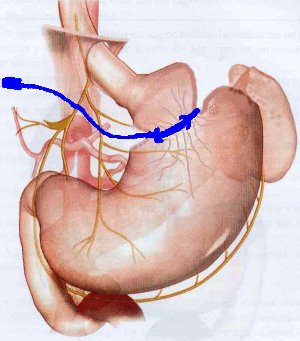|
|
|||||||||||||||||||||||||||||||
|
Obesity in Canada
Obesity Skyrocketing in Toronto Toronto — The Canadian government should ban trans fat, introduce new standard nutrition labels for front-of-food packaging and launch a major public-awareness campaign to promote healthy food choices and physical activity, a House of Commons committee “shocked” by the increase in youth obesity says.
The recommendations are among 13 tabled Tuesday in a comprehensive committee report titled Healthy Weights for Healthy Kids, which examines the “epidemic” of childhood obesity in Canada. The report says 26 per cent of young Canadians aged two to 17 – more than one in four – are overweight or obese, compared with 12 per cent three decades ago, an increase that “shocked” the committee, it said. Even more distressing, the report adds, is that 55 per cent of aboriginal children on reserve and 41 per cent off reserve are either overweight or obese. “We've got a serious problem,” said MP Rob Merrifield, chairman of the standing committee on health. “We've got to do a paradigm shift and it's going to take a concerted effort by every Canadian,” Mr. Merrifield said, noting that similar efforts were needed to convince people to use seat belts.
“The public needs to know, more than anything else, they're just eating larger meals than they should eat for the amount of exercise they are expending,” he said. For children, those meals too often include fatty and processed foods and sugary drinks loaded with calories. The report says that sugary drinks may be responsible for as much as one pound a month of weight gain in adolescents. Obesity costs Canada an estimated $1.6-billion annually in direct health care costs – 2.4 per cent of total health care spending. There's another $2.7-billion in indirect costs including lost productivity, disability insurance, reduced quality of life and mental-health problems because of stigmatization and poor self-esteem, the report says. The committee wants the government to set hard targets to halt the rise by 2010, in time for the Vancouver Olympic Games, and to reduce obesity rates in children by 2 per cent by 2020.
The most concrete recommendations include a legislated ban on trans fat – the industrially produced unsaturated fat found most often in baked or fried foods. Trans fats have been shown both to elevate “bad” cholesterol and lower “good” cholesterol. The committee also recommends a mandatory, standardized nutrition label for the front of food packages. The new label would be phased in starting with foods advertised primarily to children. “The proliferation of unregulated, front of package logs, based on different criteria and delivering different information, has led to confusion and mistrust among consumers,” the report states. The obesity problem “is like a dart board," said Dr. Geoff Ball, director of the pediatric centre for weight and health at Stollery Children's Hospital in Edmonton, and a professor of pediatrics at University of Alberta. "There are so many things we can do, but where do we start?” Dr. Ball said he welcomed the report's emphasis on data collection and hard scientific numbers, and how its “big picture” policy strokes draw attention to the complexity of obesity. “There's this perception that it's an easy fix, that it's just up to individuals' pushing themselves away from the table or that we just need to get schools to get rid of vending machines,” he said. “If the solution were that simple, we would not be in the situation we're in.”
Other recommendations made by the committee include: • A large-scale public-awareness campaign on healthy weights for children that promotes physical activity and healthy food choices • Better collaboration with provincial and territorial partners, national aboriginal organizations • A boost in research focused on children, weight, physical activity and healthy food choices, aboriginal, Inuit and Métis children • The immediate identification of a federal department to co-ordinate the effort among various departments, including Health Canada, Public Health Agency of Canada, Indian and Northern Affairs, Sport Canada, and the Canadian Food Inspection Agency • An evaluation of the methods used to provide aboriginal and Inuit communities with nutritious food, a second look at the children's fitness tax credit, and an evaluation of the effectiveness of industry self-regulation over the advertising to children of high-calorie, low-nutrient food and drinks The government has 120 days to respond to the report.
Obesity Surgery Market to Double by 2011, Firm Says March 21 (Bloomberg) -- The market for surgery and medical devices to treat the rising number of obese patients will grow to $1 billion by 2011, double last year's amount, a study found. Hospitals and other medical facilities will buy more large- capacity beds and wheelchairs, special scopes, and gastric bands that limit how much food the stomach can hold, the study by the Millennium Research Group, a research firm, said. Doctors will perform more operations, including bariatric surgery to shrink stomach capacity, the Toronto-based firm said. About 33 percent of U.S. adults were obese in 2004, up from 15 percent before 1980, figures from the U.S. Centers for Disease Control and Prevention show. The condition can lead to heart disease, stroke, gallbladder disease, and some cancers, the CDC says. Allergan Inc., Johnson & Johnson, and Tyco Healthcare Group LP are among the companies that make devices targeted to obese patients, today's report said. Procedures for the obese ``are on the rise for everything from kidney stones to heart disease,'' said Jaya Classen, a senior analyst with Millennium, in a statement. It's becoming ``increasingly common'' for very obese people to require medical treatment.
Market Leader Allergan led the market ``by a large margin'' because of rapidly growing sales of the Lap Band adjustable gastric band, used in bariatric surgery, the report found. Other market leaders, besides J&J's Ethicon Endo-Surgery Inc. and Tyco's United States Surgical Corp., are Skytron and KCI. Hillenbrand Industries Inc. in January introduced a new line of specialty stretchers with a reinforced frame and other components to support up to 700 pounds of body weight. The company two years ago introduced an adjustable bed designed to support patients weighing up to 1,000 pounds. The number of extremely obese people will total 13 million in 2011, up from 11 million last year, the report said. From 1996-1998 to 2002-2004, the average annual number of bariatric operations among obese adults increased more than ninefold, the Centers for Disease Control said. The procedure supports weight loss by reducing the body's ability to absorb food and increasing the sensation of fullness. Patients on average lose more than half their body weight.
Managing Chronic Disease Huge Challenge For Ontario Report Says Health System Slowly Improving But Gaps Need Attention TORONTO, March 26 /CNW/ - Ontario is facing a huge challenge to reduce and better manage chronic diseases, the Ontario Health Quality Council (OHQC) said today in releasing its second annual report. "The way we handle chronic diseases is at the top of our `needs improvement' list," said OHQC Chair Ray Hession. "The number of people living with chronic disease, such as arthritis, diabetes, and heart failure is increasing as our population ages - and yet many of these cases could be prevented or better treated. Ontario needs a coordinated, system-wide, long-term strategy for reducing and better managing chronic diseases. People will be healthier and it will ease a large pressure on our health system."
<<
Highlights of the OHQC's findings on chronic diseases in Ontario included:
- 1-in-3 Ontarians has one or more chronic diseases. Of those, almost
4-of-5 over the age of 65 have one chronic disease, and of those,
about 70 percent suffer from two or more.
- At least 60 percent of Ontario's health care costs are due to chronic
diseases.
- Obesity increases the likelihood of developing many chronic diseases.
One in three Ontarians over the age of 18 is overweight and 15
percent are obese.
- South Asians and Latin Americans are at a higher risk of developing
type 2 diabetes. Aboriginal Ontarians also are three to five times
more likely to develop this disease.
- Over 80 percent of cases of coronary heart disease, such as heart
attacks, and type 2 diabetes, and over 85 percent of cases of lung
cancer and chronic obstructive lung disease such as emphysema could
be prevented through healthier lifestyles - including nutritious
food, physical fitness, clean environment and meaningful, safe work.
Despite the chronic disease challenge, the OHQC reported that, overall,
there are positive signs that Ontario is making slow but steady progress in
improving its health system:
- Ontario's Wait Time Strategy has reduced wait times in the targeted
areas of cancer and cardiac care, hip and knee replacements,
diagnostic imaging and cataract surgery. Success was achieved through
a targeted strategy and supplementary funding. The model could be
applied more broadly in the health system.
- Ontario has opened 359 telemedicine centres in 190 communities, many
of them in rural and remote locations. These centres enable patients
to use computer links and video equipment for long-distance "virtual
appointments" with specialists who may not exist in their
communities.
- Since 2003, an additional half-million people reported that they have
a regular doctor, which means we are keeping pace with population
growth. The overall supply of health-care providers is growing and
will continue to grow in the future because of the increases in seats
in education programs.
- Between 2000 and 2005, the number of 12-19 year olds who smoke daily
dropped by half, from 11 percent to 6 percent.
- The percentage of heart attack patients admitted to hospital who
survive the critical 30-day post-attack period, has grown from 85.5
percent to 88.9 percent over six years.
>>
The OHQC report emphasized that Ontario must work to continually improve the quality of its publicly funded health care. "Ontarians want independent third bodies to regularly rate, measure and publicly report on their health system," Hession said. "The OHQC does this on a province-wide level, but we also need this to be done at the regional level and for each local health care organization. Practices such as accreditation drive improvements in quality by measuring how well individual institutions stack up against proven best practices and by spotlighting where there are problems, so that improvements can be made." For the second year in a row, the OHQC reported that a major barrier to accountability and quality improvement is a lack of information about what is taking place in the health system. "If we can't measure quality, we can't manage it effectively, it's that simple," Hession said. About the OHQC The Ontario Health Quality Council is an independent agency funded by the Government of Ontario through the Ministry of Health and Long-term Care. The Council reports directly to Ontarians on access to publicly funded health services, human resources in health care, consumer and population health status, outcomes of the health system and ways of improving it. The Council is made up of 10 appointed members from across the province who have a diverse range of expertise, including hospital governance, medicine, academic and research work, business, public and health policy, ethics and aboriginal and community leadership.
Obesity shortens kids' life spans: Report The childhood obesity "epidemic" is so disturbing that today’s children will become the first generation in some time to have a shorter life expectancy than their parents, a new report says. Entitled Healthy Weight for Healthy Kids, the report was issued by the Commons health committee today. The committee said it "shares the fears of many experts who predict that today’s children will be the first generation for some time to have poorer health outcomes and a shorter life expectancy than their parents. The committee noted that Canada has one of the worst rates of childhood obesity in the developed world. Weight problems can bring on Type 2 diabetes, heart attack, stroke, joint problems and mental health issues. Recent data indicate that 26 per cent of Canadians aged 2-17 are overweight or obese, up from 15 per cent in 1978. The committee heard that children continue to consume too many calories in fatty and processed foods and in sugary drinks. The report proposed 13 recommendations, stating that to address the problem, programs that promote healthy weights for children have to be rewarding. In addition, the committee said that interventions must take place at all levels - individual, family, community, school as well as all levels of government. The committee also said it’s important to set specific, measurable health targets. "The committee recognizes that childhood obesity is a complex and multi-dimensional problem that must be tackled immediately," the report said.
|
|
||||||||||||||||||||||||||||||
|
Website Design + SEO by designSEO.ca ~ Owned + Edited by Suzanne MacNevin | |||||||||||||||||||||||||||||||






